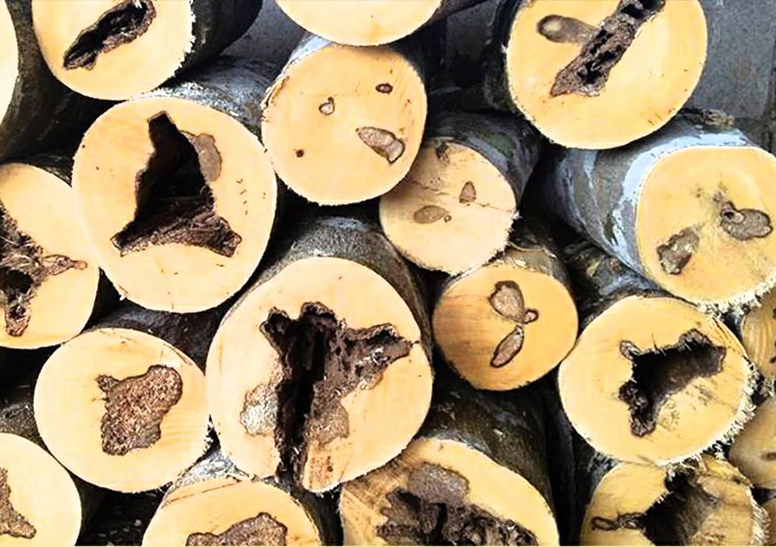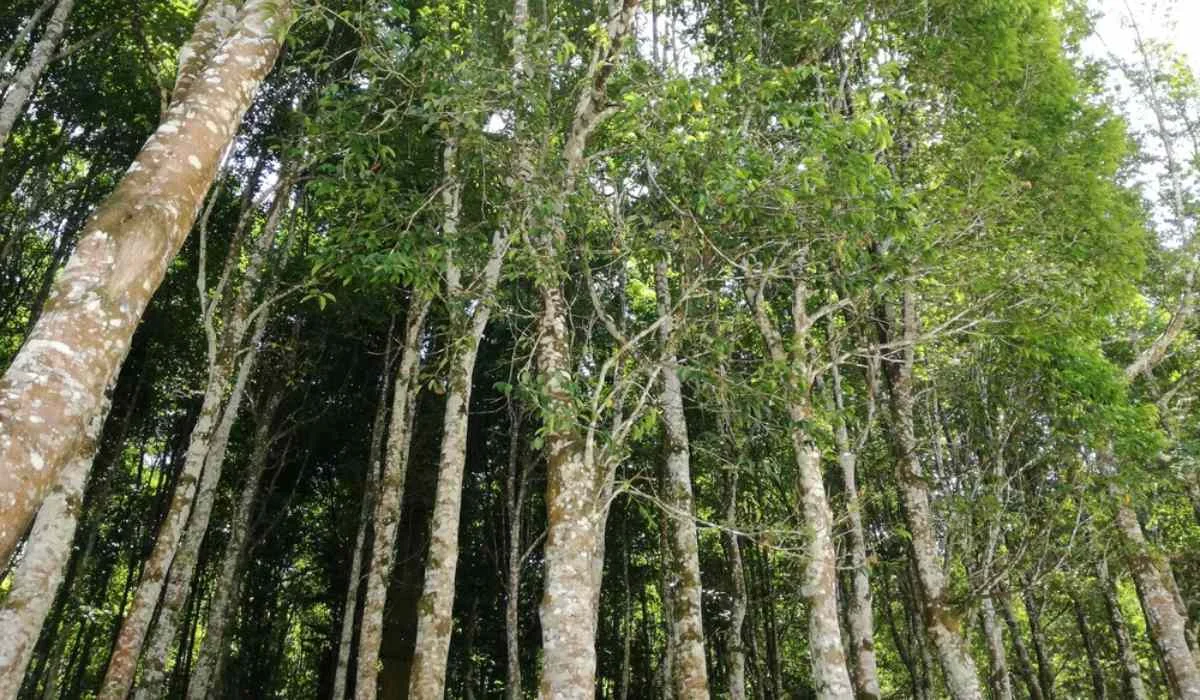Agarwood, also known as Oud or Agar is a highly prized resinous wood used for centuries in traditional medicine and perfumery. This precious substance comes from the Lapnisan tree found in various Southeast Asian regions, including the Philippines. Due to its rarity and unique properties, agarwood commands an incredibly high price on the global market. In this article, we’ll explore the description and characteristics of agarwood, its uses and applications, why it’s so expensive, places where you can find it in the Philippines, conservation challenges surrounding its production and trade…and more! So sit back and get ready to discover everything you need to know about this fascinating substance!
Agarwood Description and Characteristics
Agar is a resinous wood that comes from the lapnisan tree. Its scientific name is Aquilaria malaccensis, which belongs to the Thymelaeaceae family. This type of tree can grow up to 40 meters tall and has a trunk diameter of about one meter.
The leaves of the lapnisan tree are oval-shaped and pointed at the tip. They are dark green and have smooth edges.

One thing that makes lapnisan unique is its bark, which, when matured, has a rough texture with deep fissures. The inner layer of this bark contains resinous compounds that produce agarwood’s distinctive aroma when burned.
Lapnisan trees typically live for around 80 years before they start producing agarwood. However, only 7-10% of these trees will develop naturally without human intervention.
When infected by various fungi species such as Phialophora parasitica or Fusarium solani, lapnisan trees produce an oleoresin called gaharu that gives rise to Agarwood. These fungi infect the tree’s core part, releasing enzymes responsible for transforming normal cells into agar-forming ones.
Uses and Applications of Agarwood
Agar has been used for centuries in various cultures and traditions for its medicinal, aromatic, and spiritual properties. The wood is highly prized due to its unique fragrance that develops over time. Its uses range from incense and perfumes to traditional medicines and religious rituals.
One of the most common uses of agarwood is in producing incense sticks, which are widely used in Buddhist temples and other religious ceremonies across Asia. It is also commonly used as a base note in high-end perfumes, adding depth and complexity to fragrances.
Apart from these traditional uses, there are many modern applications of agarwood as well. It is used extensively in aromatherapy due to its calming effects on the mind and body. Agarwood oil can be added to diffusers or massage oils for relaxation purposes.
In addition, agarwood chips can be infused into tea or soaked in water overnight to make a refreshing drink with numerous health benefits such as reducing inflammation, boosting immunity, and aiding digestion.
Another lesser-known use of agarwood is in furniture making – it produces beautiful patterns when cut into thin slices that give a luxurious touch to furniture pieces.
The diverse range of applications makes agarwood an extremely valuable resource that continues to impact industries worldwide.
Why Agarwood is So Expensive
Lapnisan is one of the most expensive woods in the world, and Agarwood can fetch up to $100,000 per kilogram. The high cost is due to several factors.
- The production of agarwood is rare and unpredictable. It only occurs when a particular species of tree, known as lapnisan or Aquilaria malaccensis, is infected by a specific type of fungus. This process takes years to appear naturally and cannot be replicated artificially.
- Harvesting agarwood requires skilled laborers who carefully extract it from the infected trees without damaging them. The extraction process also involves several stages that require significant time and effort.
- There is a huge demand for agarwood across Asia and the Middle East, which is used in perfumes, incense sticks, and traditional medicine practices such as Ayurveda. As with any product with limited supply but high demand, prices rise accordingly.
Recent conservation efforts have made it more challenging to harvest wild agarwood trees legally. This has caused further scarcity in supply, leading to increased prices.

These factors combine to make agarwood so expensive, making it highly coveted among enthusiasts globally.
Places Where Lapnisan Can Be Found
The Philippines is known for its rich biodiversity and natural resources, including agarwood. Lapnisan trees, which produce agarwood, can be found in various parts of the country. Palawan is one of the top places where Lapnisan trees can be sourced.
Palawan has a dense forest with abundant lapnisan trees that grow up to 40 meters tall. The province also has strict regulations regarding agarwood harvesting to prevent overexploitation and preserve the species’ natural habitat.
Another place where lapnisan trees can be found is in Mindanao. In particular, Agusan Marsh Wildlife Sanctuary houses a vast area of wetlands perfect for growing these precious trees.
Additionally, some regions in Luzon have been identified as potential sources of agarwood due to their favorable soil conditions and climate. These include Nueva Ecija, Zambales, Aurora Province, and other areas near the Sierra Madre Mountains.
Despite these locations with abundant lapnisan trees around the country, finding pure-quality sticks remains an ongoing challenge due to illegal logging activities that continue despite government efforts towards conservation initiatives.
Conservation Status and Challenges
Agarwood is a highly prized and valuable commodity, with an increasing demand in the market. However, this has led to a significant decline in its population in many areas of the world. The overexploitation of agarwood trees for their aromatic resin has depleted many forests across Southeast Asia.
As a result, many countries have introduced regulations and restrictions on agarwood harvesting and trade to prevent further exploitation. In the Philippines specifically, some laws protect lapnisan trees (the species that produces agarwood) from being cut down or harvested without proper permits.
Conservation efforts also involve promoting sustainable practices such as planting new saplings and using noninvasive extraction methods to collect agarwood resin. These methods help preserve the health and longevity of these precious trees while still catering to high market demands.
Despite these efforts, challenges persist due to illegal logging activities carried out by poachers who seek quick profits from selling illegally obtained goods. Furthermore, monitoring compliance with existing regulations remains challenging because it requires significant resources and manpower.
Conservationists must balance preserving natural resources against satisfying economic needs while ensuring that future generations can continue enjoying the benefits offered by this unique tree species.
Final Thoughts
As we conclude our discussion on agarwood, it is evident that this precious resource has many benefits and uses. From its aromatic properties to its use in traditional medicine and religious practices, agarwood plays a significant role in various cultures worldwide.
However, with the increasing demand for agarwood products comes the challenge of conservation. The overexploitation of natural forests has led to declining populations of lapnisan trees and other species that produce agarwood. It is crucial that measures are taken to protect these trees from extinction.
While the value of agarwood cannot be understated, it’s vital that we also prioritize conservation efforts towards ensuring sustainable use and availability for future generations. By doing so, we can continue enjoying the benefits offered by this remarkable resource without harming nature’s delicate balance.
See Also:
- Tindalo Tree Characteristics and Uses
- Ipil Tree Characteristics and Uses
- Mangkono Tree Characteristics and Uses
- Kamagong Wood Characteristics and Uses
- Acacia Tree Description, Characteristics, and Uses
